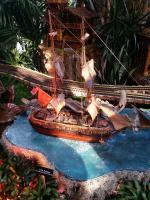 On Friday, New York lost an essential part of its waterfront when Captain John W. Doswell died after a long illness. John was a pioneer in multimedia presentations. He was a writer, designer, producer and programmer. He was also a Navy veteran who served in Vietnam as well as an experienced sailor. He was a loving father and husband. He will probably be best remembered, however, for his impact on the waterfront community.
On Friday, New York lost an essential part of its waterfront when Captain John W. Doswell died after a long illness. John was a pioneer in multimedia presentations. He was a writer, designer, producer and programmer. He was also a Navy veteran who served in Vietnam as well as an experienced sailor. He was a loving father and husband. He will probably be best remembered, however, for his impact on the waterfront community.
He was the Founding Chair of Friends of Hudson River Park and was involved with the passage of the Hudson River Park Act, which led to the formation of the Hudson River Park Trust, a city/state agency charged with building the park. He served on the board of the North River Historic Ship Society and Save Our Ships NY, and was a founding board member of the Governors Island Alliance. He also was the Executive Director of the Working Harbor Committee which sponsors the Hidden Harbor Tours, educating people about the working harbor of NY/NJ. At John’s wedding to his life-partner, Jean Preece, in July, Huntley Gill, architectural preservation specialist said of the two, “John and Jean are the most important people in New York in terms of preserving the waterfront. They are the people who get things done…”
John’s wife, Jean made the following statement:
JOHN W. DOSWELL
A star has fallen from the sky – a very bright star. John W. Doswell passed away peacefully Friday evening, January 2nd, surrounded by his family. He graced us with his knowledge, wisdom, leadership, and calm loving temperament. The ships of the harbor will sail on because of his influence, but we are immeasurably saddened by this great loss.
To every sailor comes time to drop anchor.
Haul in the sails, and make the lines fast.
You deep-water dreamer, your journey is over
You’re safe in the harbor at last.
You’re safe in the harbor at last.
Safe in the Harbor, Eric Bogle
Continue reading →
 The new generation of VLCC has arrived. The acronym usually refers to tankers, specifically, Very Large Crude Carriers, but in this case I am referring to Very Large Container Carriers. Perhaps they should be designated VLCS, for Very Large Container Ships. Mærsk now has 13 of their Triple E Class in service, each with a capacity of 18,340 TEU (Twenty-foot Equivalent Units.) Fora time they had the bragging rights as the world’s largest container ships. Indeed the Triple E website’s URL is http://www.worldslargestship.com/.
The new generation of VLCC has arrived. The acronym usually refers to tankers, specifically, Very Large Crude Carriers, but in this case I am referring to Very Large Container Carriers. Perhaps they should be designated VLCS, for Very Large Container Ships. Mærsk now has 13 of their Triple E Class in service, each with a capacity of 18,340 TEU (Twenty-foot Equivalent Units.) Fora time they had the bragging rights as the world’s largest container ships. Indeed the Triple E website’s URL is http://www.worldslargestship.com/.
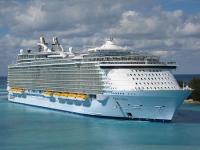 Frank Jade was a passenger on the Royal Caribbean cruise ship Oasis of the Seas until Thursday morning when
Frank Jade was a passenger on the Royal Caribbean cruise ship Oasis of the Seas until Thursday morning when 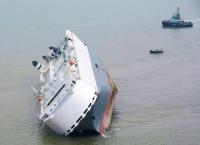 One week ago the car carrier
One week ago the car carrier 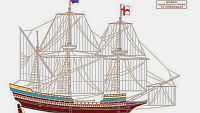 As we
As we 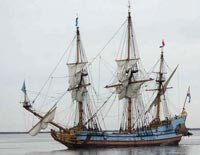 The
The 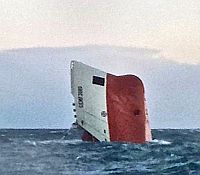
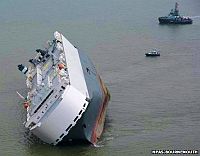 The answer to the question as to whether the Höegh Osaka ran aground due to steering failure or pilot error, is neither. The car carrier was deliberately grounded on Bramble Bank when the ship developed an unexplained list after leaving Southhampton.
The answer to the question as to whether the Höegh Osaka ran aground due to steering failure or pilot error, is neither. The car carrier was deliberately grounded on Bramble Bank when the ship developed an unexplained list after leaving Southhampton. 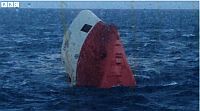 The
The  The car carrier MV
The car carrier MV  On Friday, New York lost an essential part of its waterfront when Captain John W. Doswell died after a long illness. John was a pioneer in multimedia presentations. He was a writer, designer, producer and programmer. He was also a Navy veteran who served in Vietnam as well as an experienced sailor. He was a loving father and husband. He will probably be best remembered, however, for his impact on the waterfront community.
On Friday, New York lost an essential part of its waterfront when Captain John W. Doswell died after a long illness. John was a pioneer in multimedia presentations. He was a writer, designer, producer and programmer. He was also a Navy veteran who served in Vietnam as well as an experienced sailor. He was a loving father and husband. He will probably be best remembered, however, for his impact on the waterfront community.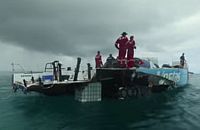


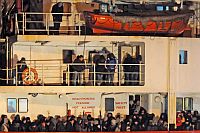 Straight from
Straight from 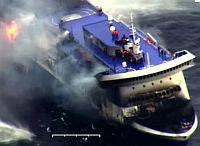 The death toll among passengers and crew from the fire on the Norman Atlantic has risen to ten. One man died when attempting to leave the ship and an additional nine bodies were found aboard.
The death toll among passengers and crew from the fire on the Norman Atlantic has risen to ten. One man died when attempting to leave the ship and an additional nine bodies were found aboard. 